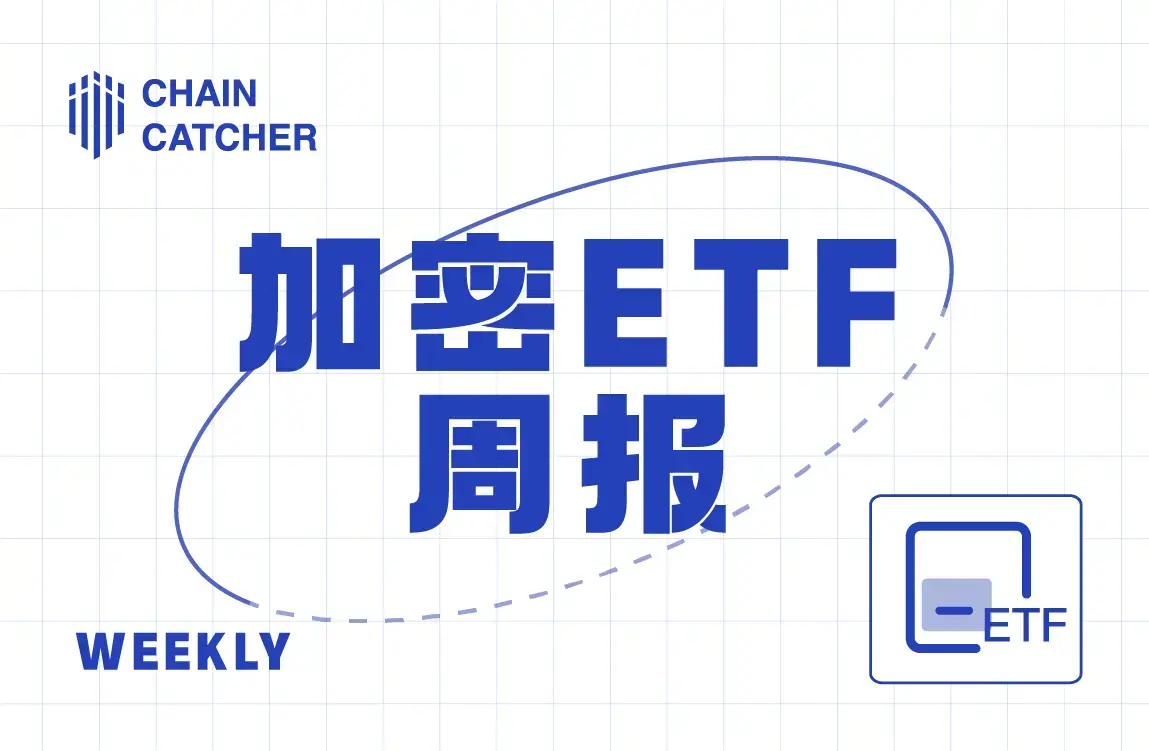以太坊与 L2 的价值:从 Crypto 商业模式视角解析
撰文:IOSG Ventures
1. Crypto 的商业模式
最近有许多对于以太坊和 L2 价值积累的批评,以太坊和 L2 日新月异的探索式发展,为其价值评估带来了难题。本文尝试给出一些思考方向。在聊如何具体看待以太坊和 L2 的商业模式之前,我们先来看一下整个 Crypto 存在的商业模式。
1.1 "企业"类
核心:控制 + 垄断(许可)、价格歧视带来利润
这一类模式的重点在于,通过对服务和协议的高度掌控,达到提高收入的目标,与传统公司经营准则无异。这里去中心化是高度可舍弃的,只需要做到让用户接受的程度即可。本质作为盈利导向的公司,需要确保高效运行,就不应发生控制权外交的情况。
对于此类项目,竞争的是商业模式即价格歧视能力,是满足用户需求的反应快速程度,是带来用户增长的能力,Token 主要是获客和资产化的手段。
以 Solana Foundation 为例,其对生态高度的掌控,可以说甚至拥有关机权的程度。Solana 自称为 Global Onchain Nasdaq, 一直非常强调基本面,尤其是商业模式和利润,构成了这个故事的核心价值。Solana 的收入较多来自于 MEV 收入,即垄断区块空间后产生的价格歧视,SOL 资产本身则是集中持有的资产化工具。
1.2 "协议"类
核心:无许可参与(资产发行、经商)、开放且相对固定的收费标准
这一类的重点在于,创造的是开放、几乎不会更改的协议标准,背后有 DAO、基金会的治理但插手较小,更多让协议自治运行。协议的使用是 Permissionless 的,盈利模式是开放且难以更改的,谁都可以来使用协议创建市场、资产以获得自己的业务或利润。"协议"往往都会又一个自治程度的评估,即去中心化程度有个范围,最低是团队掌握协议更新权,并受市场监督;最甚者销毁掉自己的更新权,将产品交由市场处置,中间有着不同程度的或硬性或软性的去中心化治理差异。代币在这里更多充当着分红和治理作用。
对于此类项目,考验的是产品运转的可持续性,需求的可持续性,入场时间带来的网络效应,往往找到 PMF 的先行者有显著的竞争优势。
1.3 "资产"类
核心:关注资产本身的价值
包括 BTC,Memecoin、去中心化算法稳定币等。资产本身基于其特性得到共识,资产的赋能基于此持续完成。资产本身的属性又包括三个方面,一是由于在特定场景下"最早采用"带来的共识和网络效应,如 BTC 作为价值存储,USDT 作为支付媒介,ETH 做资产发行;二是资产机制属性,包括稀有度、通缩机制、价格锚定等;三是由于本身象征意义带来的广泛接受度和传播度,如广泛理解的 BTC 作为"数字黄金"、ETH"可编程信用货币",Memecoin 的文化效应等。
对于此类项目,考验的是共识的强大,资产的采用和延续能力。
在 Crypto 世界中,不同的项目、资产都对应了上述商业模式或模式的组合,我们也可以尝试用这样的视角对目前的以太坊和 L2 做一个评估。
2. L2 是什么商业模式?
2.1 L2 目前的定位
L2 最初的定位是以太坊的 Scaling,规模化承载以太坊的交易。这样的目的实际上已经被一定程度上实现了。从分流以太坊交易和带来增量的角度来看,是比较成功的。目前,L2 已经成为以太坊生态中重要的一部分,交易笔数占总量的 85%,交易量占 31%,成为以太坊基本面的重要组成部分。


活跃地址数量在以太坊的 3-4 倍

由于 L2 交易成本便宜,实际的对于以太坊整体交易数据的提高会虚高一些,但仍然能看到 L2 采用带来的影响。
然而,L2 并未在如此交易下,为以太坊带来收入同比例的提高。L2 带来的收入主要分为两个方面,第一个是 DA 费用,在 EIP4844 前是交易的数据费,在 EIP4844 后是 Blob 的费用。第二个是 MEV,除了目前 Based Rollup,L2 已经将这块收入完全吞入自己的囊中,并且短期来看,回馈以太坊的预期较低。这也实际上让以太坊目前进入通胀,超声波货币的概念逐渐式微。

这里解释一下为什么 DA 费用无法成为 L2 向 L1 的收入贡献。
- DA 只有到饱和状态,才会产生优先费用,即垄断定价能力
- DA 在不饱和状态下是大宗商品,长期看来,用户可以对冲、寻找平替
- DA 的需求增长速度和供给增长速度不成比例。L2 存在大量比例的机器人交易,这些交易并不像真实用户交易一样存在必要性。如果 DA 费用带来的 C 端成本太高,这部分交易自然会放缓。因此所谓的交易数量再提高数倍 Blob 会饱和并不是合理的论断。
从本质上来说,扩容本身就和 DA 收费相悖,在持续扩容的追求下,赚钱不应从交易的拥挤程度来设计,以太坊 L2 的架构也天生参照了这一点。此前被视为 ETH 的 Beta 资产,在叙事上仍是的,L2 仍自冠自己"以太坊 L2"的称号。在基本面上已经越走越远。未来,L2 的收入,不再意味着以太坊的收入。两者应该有各自的估值体系。
2.2 不同的 L2 是什么样的商业模式?
2.2.1 Universal L2
Universal L2,指通用型的 L2,更追求自身成为一个应用生态。早期的 Universal Rollup 很多都走向了联盟形式,目前的表现较好的 Universal Rollup 大多是在利益分配的机制上有所创新,以更好的激励开发者创新和留存,用户的积极参与。L2 的趋势是逐渐不再过于依赖以太坊,通过一些模块化的方案最大化自己的可定制程度。
Universal L2 的管理方式,是由各个团队为核心向外拓展,Universal L2 面临的竞争,是直接来自于外部 L1 的竞争,Universal L2 的收入获取,是在其利益分配机制下,几乎 100% 的收入囊中。
这样的定位更符合我们所述的"企业"模式,适合通过类似 Alt L1 的方式进行估值,这意味着其价值是对其生态,基本面尤其是收入的评估。相较于 Alt L1,其优势在于可以充足利用以太坊的社区和生态,以及 ETH 的流动性。劣势在于 Token 资产化能力较为欠缺,获客能力对比 Alt L1 略显不足。
2.2.2 联盟 L2
联盟 L2 和以太坊类似,都有自己的一层和二层(L2/L3),联盟和以太坊的区别在于,联盟内发 L2/L3 是需要许可的,这保证了联盟 L2 的商业模式。
早期的 Universal L2 都走向了联盟 L2,这也意味着在取得一定市场关注度后,联盟 L2 往往是更好的生意。在转型前的 Arbitrum、Optimism,近期的 zkSync、Initia 都在往这个方向努力。对于联盟类型的 L2,本质上是已经在发展自己的 L1 生态,不过仍背靠以太坊的安全性和通过 ETH 做结算货币。联盟 L2 的特点在于,通过自己的管理能力,改变生态内部的商业模式、参与者。因此将联盟 L2 视为中心化程度较高的"协议"看待较为契合。

联盟 L2 更多被视为一个有控制权的以太坊,类似于 Optimism 这样的生态仍是将应用开发的任务下放。和以太坊的区别在于,这样的下放更具有战略意义。通过许可模式、中心化管理模式,能够集中资源,扩大协同效应,让优秀的资源进来共享流动性和生态,在新生态启动后通过营收闸口反哺原有生态。这也是为什么 Coinbase, Sony 都会选择 Optimism 的原因。借助 L2"企业"化的能力,期望能有更多破局应用的诞生。
此前我们讲到,"协议"类的模式有不同的去中心化范围。在协议去中心化的探索过程中,也常会诞生链或应用出逃的情况,比如 Arbitrum 生态中早先的 DyDx,后来的 TreasureDAO。如何在平衡好协议去中心化程度下,发展并巩固自己的生态,是衡量联盟 L2 的价值核心。
2.2.3 Appchain L2
Appchain L2,更多是一个有新的商业模式和价值捕获的 App,其估值,更应回到应用本身加上 L2 商业模式带给应用新的价值,无论其应用本身更贴合"企业"还是"协议"模式。大多数 App Rollup 会选择依附于联盟 L2 之下,更低的启动成本的同时有更强的生态辐射效应可以依赖。
Appchain 目前较多依附于联盟 L2 及 RaaS,搭建一条链的成本很低。但在链适配性的设计,配套的基础设施(比如数据浏览器等)仍需要投入。对于 Appchain 来说,肉眼可见的好处是通过对于 Token 的更有效利用和对于 MEV 的捕获等,放弃的则是在一条链上的乐高效应和更强大流动性。只论投入产出,并非所有应用都适合成为 Appchain,适合的应用具有很强的内生循环,比如 Perp DEX, Gamefi 等。长期来看,失去了转型 L2 的叙事热度,如何合理的评估 ROI 则更为重要。
3. L2 如何影响以太坊的商业模式?
以太坊在 Merge 后,尤其是在 EIP1559 后,在获得大量 L2 扩容和 EIP4844 前,依然靠着有限的区块空间中的交易量捕获着较高的优先费用和 MEV。在 L2 扩容后,实则放弃了扩容这部分交易的 MEV,也减少 L1 原生交易带来的优先费用。在 EIP4844 后,又放弃了作为 DA 的这部分收入。对于此类收益的主动放弃,并不是一个典型企业的做法。实际上以太坊也从未向我们所定义的"企业"模式发展。对于这部分利润的让出,实际上是在让 DA 和结算层坚持高度去中心化、自治的前提下,最大程度地给出空间,让 L2 能够在最小的经济负担下,牺牲一定的去中心化,发展尽可能大的生态和尽可能多的应用。
3.1 以太坊作为 L2 发行协议
自确立 Rollup Centric 的路径,以太坊便朝着更偏"协议"而非"企业"的方向前进。虽然提出了一些对 Rollup 的要求,如 L2beat Rollup stages,但并未有实际的干涉。目前 Vitalik 提出了一些 Ethereum Alignment 的要求,会让以太坊"协议"的治理模式往更有凝聚力的方向靠拢一些。但整体仍是自治程度极高的"协议",长期的作用是发行以太坊 L2。
目前以太坊 L1 仍承载着整个生态超过一半的交易量。而长期来看,以太坊更类似提供了一种高度去中心化自治、抗审查、安全性最高的无许可发行 L2 的平台(结算层)。
一般来说,无许可发行平台的模型,都是从新资产发行和交易中抽水一定的比例,如 Uniswap 抽取用户手续费、Pumpdotfun 早期收取用户发币费、预测市场抽取用户交易费用等等。
因此以太坊虽是 L2 发行协议,但并没有在早期设定通过 L2 的盈利闸口。这导致诞生了大量依附于以太坊流动性和社区但并未向以太坊贡献收入的 L2 生态,这意味着以太坊是"协议"模式中最追求去中心化自治的一类。纵观发展较为成功的非许可协议,比如 Uniswap,在一些拥有绝对垄断地位和网络效应的池子上,开启了费用开关,在协议取得网络效应后,在用户能接受的尺度下,尝试性的获取费用,这是中心化管理带来的优势。目前对于以太坊来说,一方面在通过 Based Rollup 等做些许尝试费用闸口的尝试,一方面也并不强求对于利润的追求,在让原先没有盈利闸口的 L2 生态继续高速发展。
3.2 以太坊作为价值存储资产&可编程信任货币
ETH 长期难以通过"企业"、"协议"的模式来估值,因为早期 L1 的商业模式在扩容后不再成立。毕竟,一个愿意舍让自己利润的企业,一个愿意永久关闭掉费用开关的协议,也不应再以传统的企业&协议基本面视角进行估值。
以太坊舍弃掉基本面的初衷,是为了给整体生态发展更多的空间。随着生态的繁荣,以太坊的价值,最终也将落在 ETH 的货币价值上。那么,潜在的繁荣以太坊生态能和 ETH 互相带来什么价值呢?
部分人认为是 ETH 带来的安全属性。但同时一些信仰分布式网络价值同时 Anti-crypto 的技术派认为,P2P 网络不应与特定且具有投机属性的货币绑定以提供节点的激励手段,一些人认为应以更去投机的模式,比如稳定币或早期的 PoW 挖矿形式提供激励。分布式网络所追求的去中心化和不断降低成本追求资本密集的 PoS 挖矿并非天然适配,需要很多治理方式改进。同时 ETH 本身的安全价值受本身价格影响,具有相当的反身性。这两点我们在此前讨论经济安全的文章中提到过。目前无论是激励还是安全模型,ETH 目前都做得很好,但长期来看并非其最擅长的。
那么 ETH 相对于以太坊网络最重要,且会被市场认同的价值是什么呢?

我们或许可以从以太坊的发展历程找到一些头绪,以太坊历史目前为止有五个高光:
- 直接的 Token 发行
- DeFi Summer 流动性挖矿
- 流动性质押
- L2 挖矿
- 再质押 AVS 挖矿
最早期直接通过以太坊发行代币资产,打开了资产发行的新世界,也让以太坊找到了最初的 PMF。从此以后,ETH 的主要发展节点都和资产发行息息相关。
DeFi Summer 时代,资产发行模式演变成了流动性挖矿,不仅让 ETH 作为支撑资产发行的资产,还让其成为具有计价能力的流动性标的。于是 ETH 找到了第二个 PMF——流动性计价资产。从此以后,以太坊生态的资产发行都会附带对于流动性改善的思考。
流动性质押,在解决质押需求的同时引对流动性计价价值的增强。从此之后,资产发行都逐渐引入 ETH 时间机会成本挖矿的属性,也即质押,这是以太坊的第三个 PMF。
L2 挖矿是此类资产发行 + 流动性计价 + 时间成本挖矿的一种表现。通过将 ETH 桥接到 L2,质押并挖取原生 Token/DeFi 协议 Token,同时提供流动性,这份流动性又通过 L2 上的流动性引擎流到各个协议。ETH 的三个 PMF 合一。
再质押和 AVS 挖矿又是三者合一的另一种实现。流动性再质押协议释放流动性,类似于 EigenLayer 的再质押协议提供质押,无限期的通过时间成本挖矿 AVS 原生 Token。
以太坊不断重复并改善着这样的模式,在资产发行和 Defi 用例中,为 ETH 本身不断创造需求和价值。也不断强化着 ETH 在无论是生息资产,资产发行、流动性提供环节的第一选择,或是资产的曝光度及作为 gas 的需求,无一不让 ETH 分发到协议和用户的手中,成为以太坊生态中基础设施、协议所关注的首要目标和用户心智中的价值货币第一选择。
目前对这份价值的竞争并不激烈,如 Uniswap 主流池子中以 ETH 为结算单位的货币对占到了 80% 以上。但 ETH 还是面临一些潜在竞争。包括 L2 原生资产和衍生资产在价值存储上的竞争,比如 Base 上的 $cbBTC,以及意图网络带来的链下流动性的竞争。

但长期来看,围绕 ETH 建设带来的网络效应,经济活动的增量市场带来需求增长,将会如 Myles 所说,一切价值都会变的更有价值。
4. 总结
Crypto 具有价值的商业模式包括三类:企业、协议、货币本身,前两者差别主要在协议的中心化控制、垄断、调整和价格歧视能力,协议本身也有对于不同程度自治的追求。货币本身在于某一具有 Traction 的场景早期使用产生的网络效应。
由于以太坊及其 L2 战略的早期定位,将以太坊的价值往无许可"协议"和 ETH"货币"的层面推动。又由于以太坊的愿景、领导架构和早期 L2 战略,以太坊半主动半被动地放弃了来自 L2 的营收,降低 L2 负担为 L2 打开增长空间。尽管目前来自以太坊基金会的 Ethereum Alignment 的标准越来越清晰,但整体开放自治的定位也让以太坊不再定位为一个单纯的"企业"。
强大的早期 L2 生态演变成联盟 L2,本质上是更具中心化领导,有许可的 L2 发行"协议",以更中心化的模式延续了以太坊的使命。Universal L2 回归了 L1 层面作为"企业"的竞争,相比于以太坊生态外的 L1 有启动层面的优势和代币层面的劣势。Appchain 的价值则应该回归商业模式有了改进后的"应用"本身(更偏"企业"或是中心化程度较高的"协议"),更需要考虑起链的 ROI。L2 较为中心化的蓬勃发展,基于的是以太坊高度去中心化模式下,舍弃收入带来扶持和空间。
以太坊,在 DA 已被证明不是合适的商业模式的前提下,逐渐定位为舍弃了盈利闸口的无许可 L2 发行协议。其主动舍弃了在存量市场下的垄断能力,希望能够换来的是增量市场下的造血能力。L2 联盟及一些企业性质极强的 L2,在没有向以太坊纳税的负担下,如何带来新的增量,是以太坊最大的赌注。
以太坊作为货币的价值,来自于以太坊上不断的资产发行和流动性游戏。五次 PMF Moment,不断给 ETH 资产本身带来价值和使用惯性。随着以太坊整体生态的扩张,ETH 作为生态内最具有价值的资产,在新生态启动到运行的每个环节都起着至关重要的作用,这仰仗于 ETH 强大的网络效应。随生态稳定下来,固然会有部分原生资产 /Wrap 资产起到补充作用,但难以影响 ETH 的绝对份额。
如果有未来 L2 生态繁荣的一天,作为具有网络效应的 ETH,即使不一定具有垄断效应,仍能获得增量带来的采用上的巨额回报,届时以太坊将逐渐奠定以 ETH 资产为主导的价值形式。
在理解以太坊为生态的取舍和 ETH 以及 L2 的价值定位后,我们更加相信 L2 作为以太坊生态的生力军,将以商业利益驱动的模式轻装前进,以丰富的技术架构选择,多方向发展,内部垂直整合的优势快速打开用例的天花板。而 ETH 将作为一种最具有网络效应的资产,随整个生态的蓬勃而得到价值发现。









